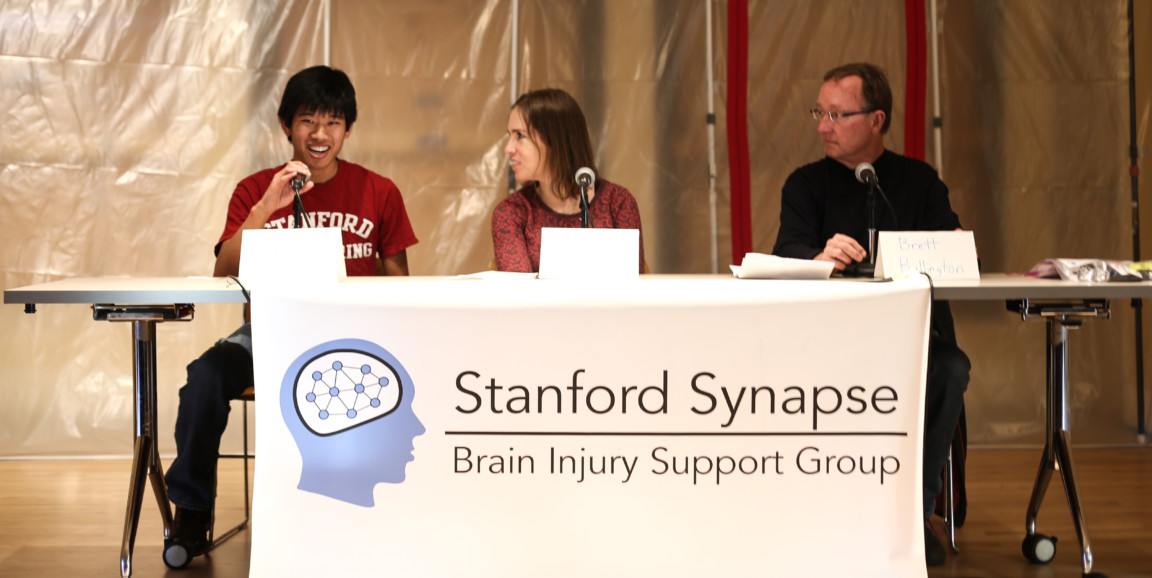During his first quarter as a Stanford freshman in 2015, Kevin Supakkul's life changed in an instant.
One day as he rode on campus, his bike struck a post, and Supakkul went flying. He was wearing a helmet but still sustained a concussion. His symptoms persisted over the next few weeks: headaches, dizziness and disorientation, particularly when he tried to read.
"It was something I expected to go away quickly," Supakkul said, "and it just didn't."
After taking time off to recuperate, Supakkul returned to Stanford. Since then, he's been gradually rebuilding his academic career in mechanical engineering.
He spoke of the challenges at a recent campus symposium on brain injury awareness.
"The symptoms weren't the worst part of it," Supakkul, now 20, told the audience. "I really had a hard time accepting that things were different now, and I had to deal with the present as it was."
A panel discussion featuring his experience and those of others living with brain injuries capped the three-hour "I Love My Brain" symposium. Sponsored by the brain injury support group Stanford Synapse, the event centered on the theme of campus bicycle safety and provided a window into neuroscience and concussion research.
In opening remarks, Stanford President Marc Tessier-Lavigne, PhD, highlighted recent discoveries that could lead to ways of minimizing or treating damage from brain trauma.
"I'm a glass half-full kind of person," he said. "The glass is definitely half-full there, and we need to fill it as rapidly as possible to help patients in need."
Speaker Jamshid Ghajar, MD, PhD, director of the Stanford Concussion and Brain Performance Center, described how eye-tracking technology helps to assess how a person's brain is functioning and whether an individual has suffered a concussion. And Russell Siegelman, an angel investor and Stanford Graduate School of Business lecturer, relayed how his personal experience with a brain hemorrhage and, later, a serious bike accident led him to donate 1,800 helmets to Stanford students. He was dismayed to observe that few students ultimately wore them.
Supakkul and other survivors offered frank accounts of life after a brain injury.
Weeks before her freshman year at University of California, Davis, Emily King fell off of a 40-foot cliff in Santa Barbara. She spent six months in the hospital, her left side paralyzed, relearning how to walk, talk and swallow. Eventually, King earned a bachelor's degree in nutrition science, but she would never drive again.
At the symposium, nearly 14 years after the accident, she choked with emotion as she described how it had changed the course of her life.
"Everything is harder with a brain injury," King, now 31, said. "Finding friends. Finding jobs. Finding good relationships. There's no OK Cupid for someone with a brain injury."
Limited use of her left hand made it difficult for her to perform some of the duties of a part-time job in Stanford dining halls, so she left the position after three years. Now she works for a dog daycare.
King and Supakkul both said they felt the general public isn't very understanding of their limitations.
For the first few years, King found herself saying inappropriate things in public. That's less of a problem now, but her left hand is not fully functional, and her speech continues to be slurred.
"I'm the one who you can tell mostly off the bat that I'm different," she said, adding, "I think I'm still improving."
Supakkul's lingering symptoms are not as outwardly noticeable, and he sometimes must explain them to friends. For example, long car rides trigger searing headaches, so he often bows out. And for every half hour that he reads, his head hurts for 10 minutes or more. That's an improvement since the first weeks after the accident, though, when five minutes of reading led to hours of anguish.
He believes his symptoms were more acute because he'd had an earlier concussion when he collided with a garage door as a younger teen. This time, meditation, cardio exercise and working hard on reading helped his recovery, Supakkul said.
He continues to get better, though it's happening slowly. His doctor believes his symptoms will go away completely -- someday.
"I try not to look too far ahead because I've proven that the future is hard to predict," Supakkul said. "I never know what's going to happen to my brain."
Photo of Kevin Supakkul (left), Emily King and Brett Bullington by Tami Alade




